/ Film Class #23 / Essential Camera Shots All Filmmakers Must Know /
Film use certain common conventions that we could break into camera angles, shot size & camera movement.
(Conventions aren't rules: expert practitioners break them for deliberate effect, which is one of the rare occasions that we become aware of what the convention is.)
Camera angle: bird's eye (aerial) overhead, high angle, eye level, pov, low angle, worm's eye
Shot size: extreme close up, close up, medium, wide shot, extreme wide shot, POV
Camera movement: 360-degree, zoom, pan/tilt, dolly/crane/, handheld
CAMERA ANGLES
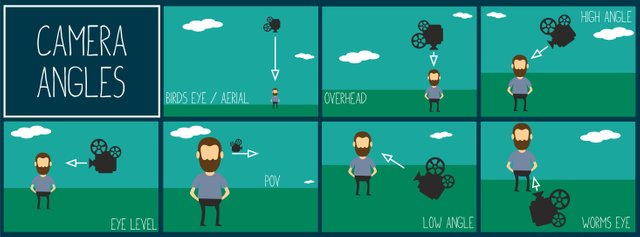 (click to enlarge)
(click to enlarge)
SHOT SIZE
describe the size of the area visible within the frame, and therefore the distance between the camera and subject.
Extreme close-up shot (ECU / XCU)
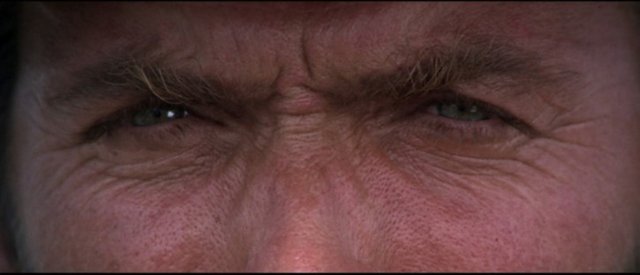
Extreme close-up shot is a view so tight that the audience can only see some features of a character or object. The entire screen is filled with a single feature, like a character’s eyes or mouth. The most infamous use of this technique is from director Sergio Leone. In his film The Good, the Bad and the Ugly, the audience is treated to an intense stand off between the three main characters.
As the tension builds, each shot gets tighter on every character until the audience is only looking into each of their eyes. Extreme close-ups can also apply to an object, like a pair of scissors cutting a bomb wire.
Close-up shot
Close-up shot shows a character's face and shoulders. Typically close-ups are used to portray a character’s emotions, while only framing their face.
Medium wide shot (American shot)
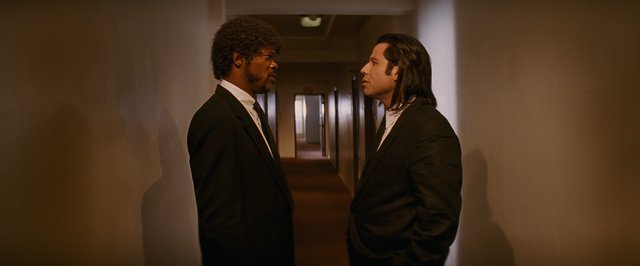
Medium wide shot shows a character usually cut off across the legs above or below the knees.
The definition of a medium shot varies around the world. The standard medium shot frames a character from their waist up. It’s used to show a mix of a character’s facial expressions and body language. These shots are so common based on the fact that it feels natural to the audience, just like they were there talking to the character.
Director John Ford is a master of the medium shot, often using it throughout his westerns. In the below image, we see a young John Wayne featured from the knees up in a medium long shot. Above, Ford frames John Wayne from just above his waist in a medium close-up.
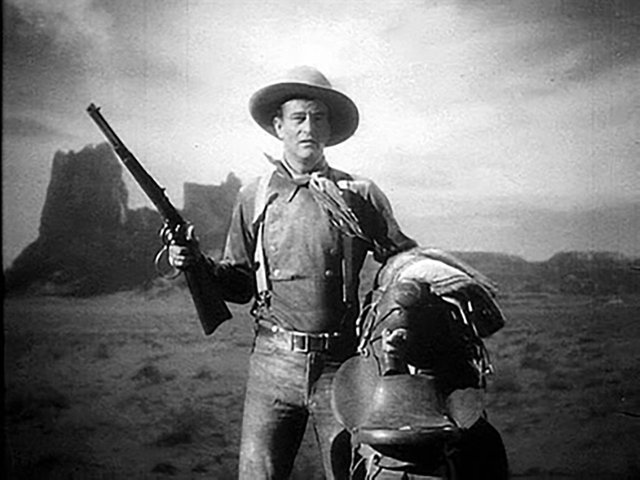
Wide shot (full shot)

The wide shot frames a character from head to toe. It is also referred to as a long shot or a full shot. These shots are used to show the audience the context and space of a scene. They should feature scale, distance, and location.
The only real difference from an extreme wide shot is that fact the the main character has a larger presence in the frame.
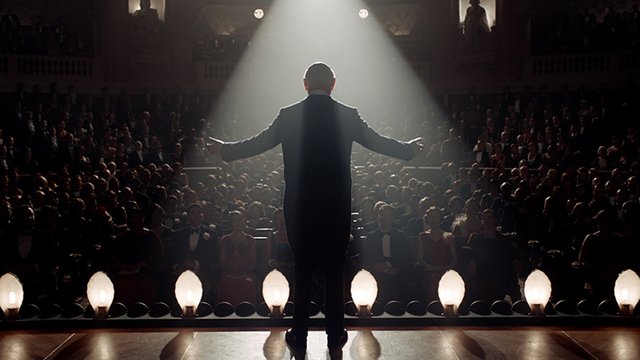
In this final wide shot from Hugo (image above), take a look at how much is going on. There is an absolutely incredible amount of detail surrounding Georges Méliès, but with the center framing and the stage light draws all attention to him. Take note of the massive amount of props and characters in frame.
There are four stage lights on either side of his feet, as well as two lights in the balcony framing his shoulders. There are two statues in the background, both backlit. Then there is the massive audience there for the show. All that detail, yet you are still focused on Méliès. That’s how powerful a wide shot can be with the right framing and lighting.
Extreme wide shot (long shot)
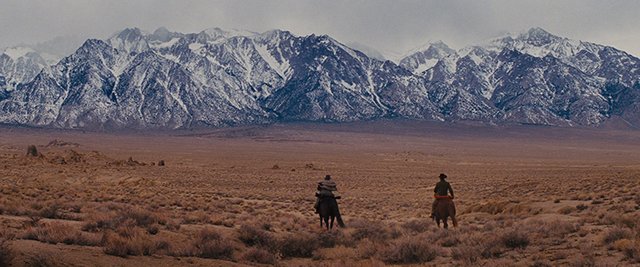
The extreme wide shot is a shot taken from a long distance, used to impress the audience. These shots are typically used as establishing shots because they often show landscapes or massive building exteriors. It represents the surroundings around a character, often showing scale, distance, and location. If the character is visible in the shot, the audience should see their entire body from head to toe.
In the image above from Django Unchained, we are shown the standard extreme wide shot of westerns. The vast open landscape shows how far they have to travel, and the mountains represent the obstacles ahead.
Point of View (POV)
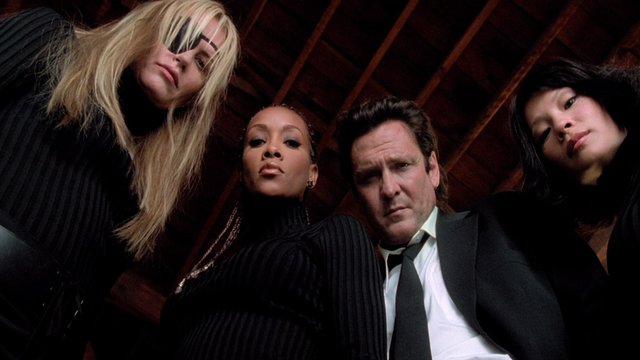
A point of view shot, or POV, is an angle that shows what a character is looking at. Typically POV shots are placed in between a shot of a character looking at something and a shot showing the character’s reaction.
Check out this great montage of POV shots from Leigh Singer.
Camera movement
The way the camera moves says more to us than just a show-off of technical tricks. This is a CineFix video that shows how directors use unique camera styles to best tell their stories on-screen.
15 Essential Camera Shots
Here is a great video by Sareesh Sudhakaran of wolfcrow in which he talks about fifteen of the most widely-used camera shots, which includes the many different kinds of angles, sizes, and camera movements.
Thanks again for the really helpful information. Good work
@michaelhh
Glad you found it helpful! Thank you!
Excellent info @marinauzelac. :) I know I am preaching to the choir here, but having a good grasp of camera angles is essential for newcomer film makers. It is a free tool that can make your images look interesting and unique. Even with the most inexpensive of camera you can create an exciting image that can help tell your story. (see Blair Witch Project) Also, many of the best film makers have their own unique camera angle which they go to and defines them as artists. You mention some in your post.
I recently shot a conversation between an adult and a child for a client. I carefully used camera angles to first place the adult in the place of athority then as the conversation progressed my angles provided the opposite. By the end the viewer was looking up at the child and down at the adult. Worked pretty good :)
Thanks for the great post.
Following
Cheers,
Bucky
@buckydurddle
thank you for this comment, means a lot!
If you have a link to your video, I would love to see it :)
You write very well hopefully this paper gets upvote that there is and redeem everyone. so your position is quickly upgraded. Keep working, I faithfully wait for the next post
@nasrud
thank you so much!
https://postimg.org/image/iuanzivxx/2417092a/